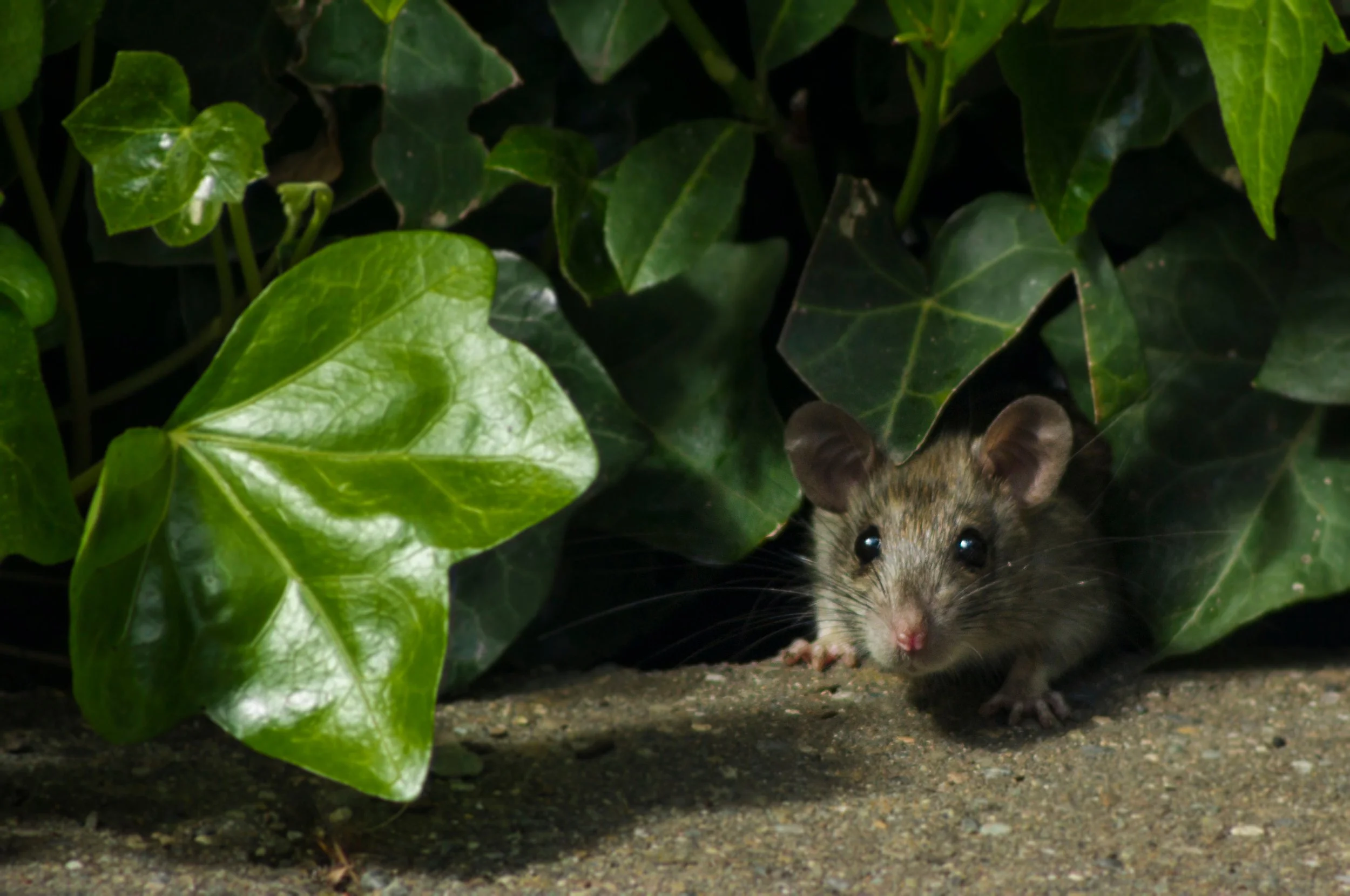Discouraging Resident Rats
Second-generation anticoagulant rodenticides (SGARs) have been permanently restricted in BC. This is a HUGE win for wildlife! SGARs pose major risks to wildlife, such as owls, that eat rats and mice, causing a slow and painful death to both rodents and the predators who eat them. Rodenticides also leave toxic residues in the environment.
But what does this mean for those of us worried about potential influx in rat populations? We suggest making your yard unwelcoming to rats, and the we think that the best way to do this is invasive species control by removing English ivy.
How to Make your Yard Unwelcoming to Rats:
Rodents look for warm places to live so it’s important to rodent-proof your home. Seal up any cracks or crannies that a rodent could squeeze into. We suggest also controlling invasive species in your yard, particularly English ivy. English ivy provides a perfect shelter for rats because it provides a dense cover for them to live under, burrows for them to hide in, and vines to climb on while searching for food. Dense vegetation hides them from predators, such as owls, and therefore English ivy provides the perfect cover for them.
Ivy Removal can be done by hand pulling and cutting. Make sure to remove the stem and root fragments to prevent regrowth. Be sure to dispose properly at the landfill to prevent the further spread of English ivy. Besides harbouring rodents, English ivy is an invasive plant that smothers native plants needed to support a healthy ecosystem for wildlife and birds. Removing English ivy is not only beneficial to helping you prevent rodent neighbours, it also decreases the biodiversity in your yard. We encourage replacing the English ivy with native plants. For gardening tips check out HAT’s Gardening with Native Plants guide.


